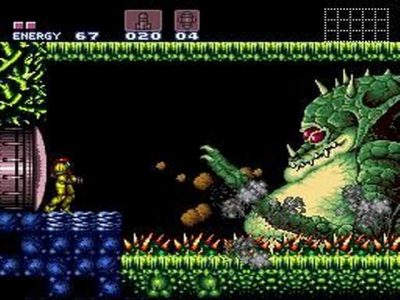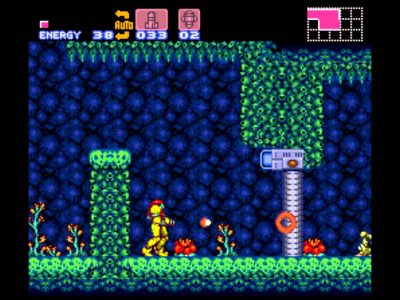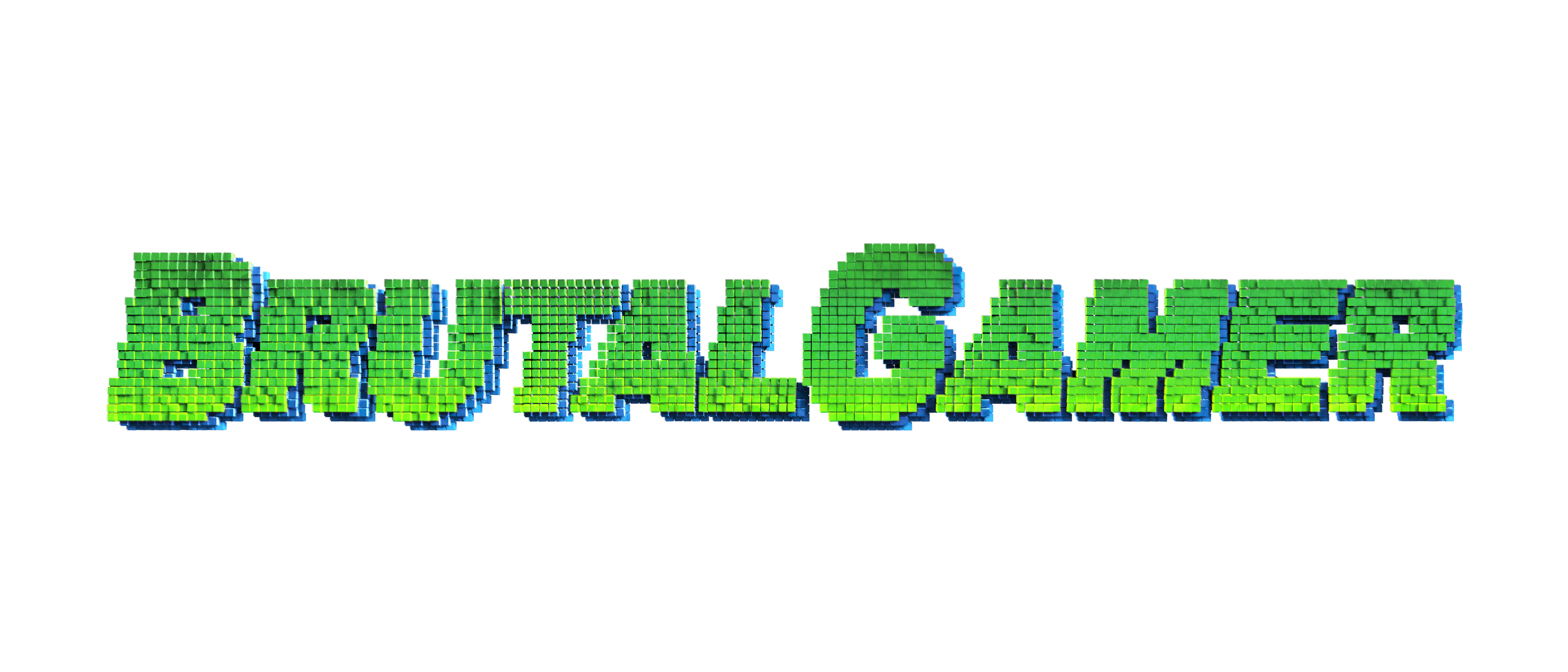In the first of what is set to become a regular series here at Brutal Gamer, I am going to be reviewing Super Metroid, the classic game which originally released on the Super Nintendo, way back in March of 1994. Just to clarify before we get into the review; in most of these retro-games’ cases, I assume that most people will know generally most everything about the game we’re exploring. For this reason, we will be focusing on aspects regarding the aging of the game in question.

Super Metroid takes place in an apparent alternate future, after the events of Metroid (NES) and Metroid II: Return of Samus (One of the best GameBoy games of all time -ed). After attempting to eliminate the metroids from existence, by commiting single-handed genocide in Metroid II, Samus finds the last remaining metroid: a baby.
In order to not squander the opportunity that researching the metroids presents, Samus delivers the baby metroid to a group of scientists. But immediately upon leaving the station, she receives an SOS, and returns to find her nemesis Ridley. After a brief fight, Ridley returns to Zebes. Samus gives chase and the game really begins.
The story of Super Metroid is a very simple one. Samus must hunt down Ridley and the baby metroid in order to keep the power-draining alien from escaping and repopulating, creating a universal threat once again. The virtual lack of a story is one of the reasons that the game holds up so well.

The game refuses to hold the players’ hands, forcing them to explore and make their own way in a world inhabited by nasty natural predators. Samus was one of the first major female characters in games when she was revealed to be a woman at the end of Metroid in 1986, allowing this female bounty hunter to go about her business without contrived plot devices about women’s problems (or whatever Metroid: Other M forced down our throats).
This ‘blankness’ has contributed to what Samus has become over the years. She is badass and calculating, and is strong to the point where she can fight aliens like Kraid (Space Godzilla?) and Ridley without blinking an eye. In this case, Samus is more important than the story; she becomes the story.
And that is the reason the story of Super Metroid has held up for so long. To that point, it’s impactful and effective even today. Even the end of the game has a plot related twist that is one hundred percent worth playing for, it’s that well put together.
In terms of presentation, Super Metroid benefits from being a member of the seemingly untouchable 16-bit graphics club. The pixel art these games employed have retained their luster. Samus is crisp and discernible throughout the game, and the environments each have different feels so that the player can always tell where they are in the world.
The game boasts some of the best music from the era as well, such as Maridia’s Theme. The music design stands up to the test of time and is still enjoyable to listen to today, in the face of fully orchestrated scores that come with other Nintendo games. The quality is also high, making the audible experience a great one in Super Metroid.
With all of the above though, still the most important aspect of Super Metroid that bears discussion in any review is the gameplay. On the most basic front, Super Metroid plays superbly. Inputs are responsive and Samus reacts to button presses in a way that is satisfying and expected. But when we are talking about the gameplay aspect of Super Metroid, it would be blasphemous to not mention the game-style that Metroid helped to popularize and install (as a genre) in the industry.

Metroidvania (as inspired by Metroid and Castlevania) is the idea of starting with very few resources and a large world to explore. As the player gathers more tools, more areas become available and more trials become apparent. Super Metroid is a prime example of this done well. Although it is true that the world is very limited in the beginning, it does not feel limited.
The natural-feeling limitations ensure that players don’t feel overly restrained, and by the time you find something that will allow you to proceed, you never feel overwhelmed. During my recent playthrough, I was constantly anxious to explore, even though I knew what was around each and every corner as a longtime fan of the game.
It is also important to mention that Super Metroid helped to cement this Metroidvania type of game in the general conscious of gamers and developers throughout the industry. Thanks to the impeccable design that Super Metroid showcased, we have been able to enjoy the products of this design philosophy since Super Metroid released, just over 22 years ago.
Final Thoughts
In all, Super Metroid is a game that holds up nearly-absolutely. It might seem as though I have done nothing but praise it throughout this review, but the truth of the matter is that I have a hard time finding things wrong with it. It strikes the difficulty scale just perfectly, and a variety of weapons and environments makes sure that the player is never bored.
In short, the game holds up. It is just as fun to play as it was in 1994, and doesn’t feel as though it has aged at all. If you haven’t played this game yet, you really don’t have an excuse not to. It’s available on the Wii U, Wii, SNES, and soon will be available on the New 3DS in North America.
Nintendo, take a hint and make another two dimensional Metroid, just make it minus the hand holding present in Zero Mission and Fusion please.
 BrutalGamer Bringing you Brutally Honest feedback from today's entertainment industry.
BrutalGamer Bringing you Brutally Honest feedback from today's entertainment industry.





